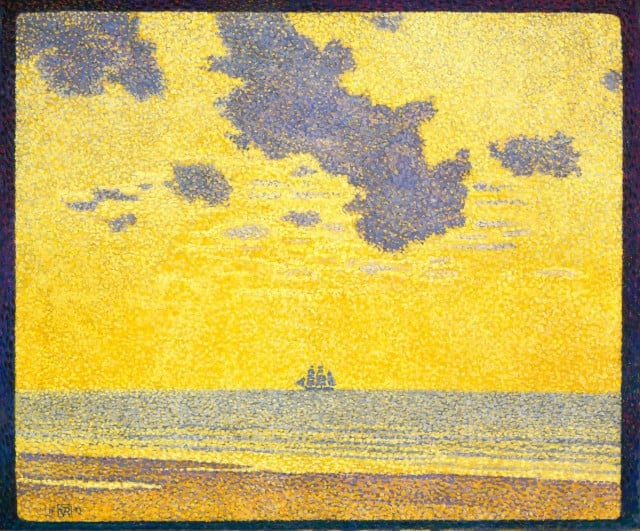Art & Exhibitions
Neo-Impressionism: Philosophy or Great Decor?
A new show reveals the profundities–and gorgeous surfaces–of the movement.

A new show reveals the profundities–and gorgeous surfaces–of the movement.

Blake Gopnik


Theo Van Rysselberghe’s “Big Clouds”, painted in 1893, belongs to the Indianapolis Museum of Art, and is now on loan to a show called “Neo-Impressionism and the Dream of Realities: Painting, Poetry, Music” at the Phillips Collection in Washington. The show claims that the Neo-Impressionists – Seurat, Signac and their ilk – were profound thinkers (at least in the clichéd sense), wanting to delve deep into philosophy and symbolism. That may be true of their intentions – that old fallacy once again – but I don’t buy it as a description of what they actually achieved. I think a quote from a Phillips wall text gets nearer the truth: In 1890, the critic Felix Fénéon called Signac’s paintings “exemplary specimens of a highly developed decorative art.” I’d prefer to see Neo-Impressionism in the context of Art Nouveau, and of the fertile and daring collapse of fine art and design. That makes especially good sense of the dot-covered borders and frames that Van Rysselberghe and his fellow Neo-Imps put on their pictures, helping their works transition into the decors all around them. Imagine “Big Clouds” in a room full of Tiffany’s Favrile glass, and it starts to come into its own.
For a full survey of past Daily Pics visit blakegopnik.com/archive.